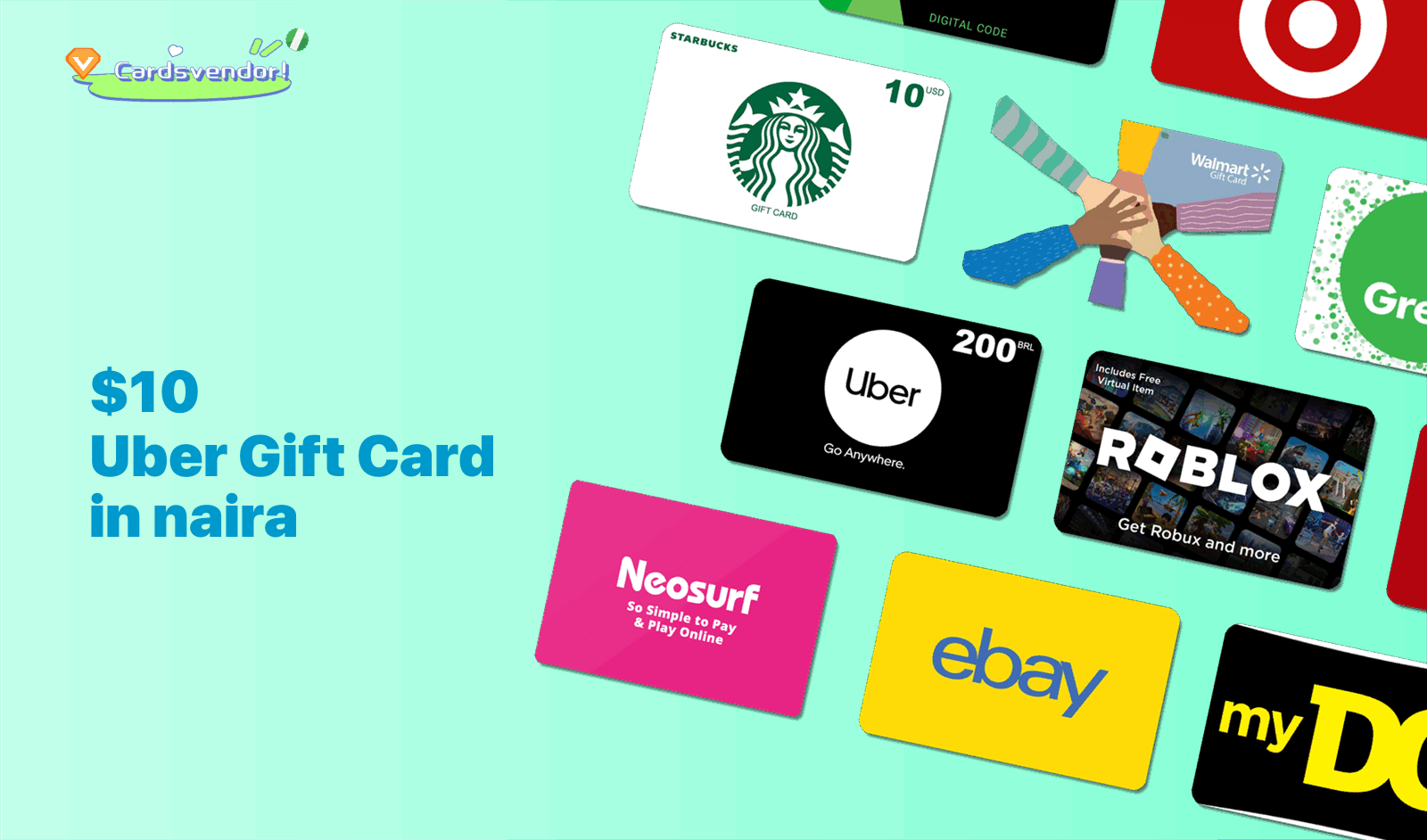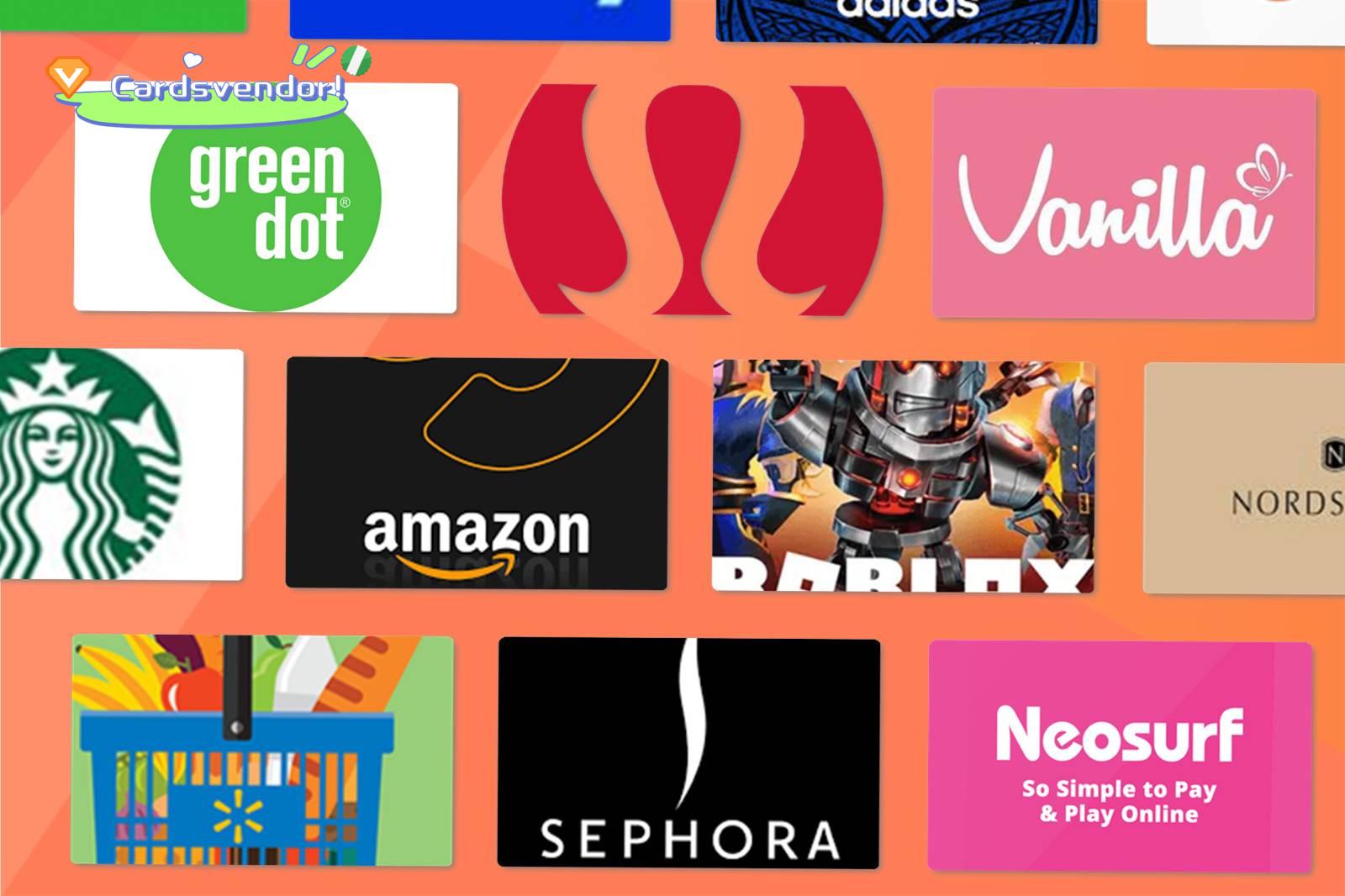Introduction to Uber Gift Cards

An Uber Gift Card is a prepaid card that allows users to pay for Uber rides, deliveries, and other services. Available in various denominations, it’s a convenient way to gift someone an experience with Uber. Recipients can use the card by simply entering the redemption code into their Uber app. The card does not expire and has no additional fees, making it a flexible and hassle-free gift option.
Simple Steps to Convert Uber’s Gift Cards into Naira
How much is $10 Physical Uber Gift Card Converted to Naira?
Card Type
USD
Naira
Uber
10
2,100 to 2,450
Uber
25
5,250 to 6,125
Uber
30
6,300 to 7,350
Uber
50
10,500 to 12,250
Uber
100
21,000 to 24,500
Uber
200
42,000 to 49,000
Uber
500
105,000 to 122,500

How can I utilize my Uber gift card?
Redeem the Card: Log into your Uber account on the app or website.
Select ‘Redeem a Gift Card’: Tap on ‘Payment’ in the app or ‘Account’ on the website, then choose ‘Redeem a Gift Card.’
Enter the Code: Enter the 16-digit code found on the gift card and click ‘Apply.’
Verify the Balance: Check the updated balance in your payment method section.
Use the Balance: When you request a ride, the available balance will be automatically applied to the fare. If the ride exceeds the card balance, you can choose to pay the difference with another payment method.
Remember, the card can’t be used for cash back, tips, or other non-fare related expenses. It also can’t be combined with other discounts or promotions.
Uber gift cards can be purchased in many countries around the world. The availability of Uber gift cards varies by region and country due to different business partnerships and regulatory environments. As of my last update, the following are some countries where you can typically purchase Uber gift cards:
- United States
- United Kingdom
- Canada
- Australia
- Germany
- France
- Spain
- Italy
- Netherlands
- Belgium
- Switzerland
- Sweden
- Norway
- Denmark
- Finland
- South Korea
- Singapore
- Japan
- Brazil
- Mexico
- Colombia
- Chile
- Peru
- Argentina
- South Africa
- Egypt
- India
- Philippines
- Indonesia
- Thailand
- Vietnam
- Malaysia
- Hong Kong
- Taiwan
Please note that the availability may change, and it’s always a good idea to check the official Uber website or contact Uber customer support for the most current information on gift card availability in your specific country or region.
How To Check Uber Gift Card Balance
1. Open the Uber app.
2. Tap the menu icon (three lines) in the top left corner.
3. Select “Payment” from the menu.
4. Tap “Gift Cards & Promotions.”
5. You’ll see your gift cards listed; tap the one you want to check.
6. Look for the “Balance” or “Available Amount” section to view your remaining balance.
Factors that Determine Uber Gift Card Rates
Market Demand: High demand can drive up prices, especially for popular brands.
Issuer’s Costs: Issuers’ operational and administrative expenses can affect pricing.
Foreign Exchange Rates: Fluctuations can impact the cost of purchasing international gift cards.
VAT and Taxes: Government-imposed taxes can increase the overall price.
Distribution Costs: Higher costs to distribute cards can lead to increased prices.
Brand Reputation: Established brands may command higher prices due to perceived value.
Load Amounts: Higher denomination cards may have higher per-unit costs.
Competition: Intense competition can lead to lower prices to attract customers.
Factors that Determine Uber Gift Card Rates
Issuer Costs: Issuers incur costs for card production, logistics, and technology, which can affect pricing.
Exchange Rates: Fluctuations in the Nigerian currency exchange rate with the US dollar impact pricing due to many cards being denominated in USD.
Competition: Competition among issuers can lead to price adjustments to attract customers.
Market Demand: High demand for certain gift cards can lead to higher prices.
Transaction Fees: Fees associated with purchasing, loading, and using gift cards can influence prices.
Promotions: Issuers may offer promotional rates during festive seasons or as part of marketing strategies.
Regulatory Compliance: Compliance with local regulations and taxes can also contribute to price variations.
